News
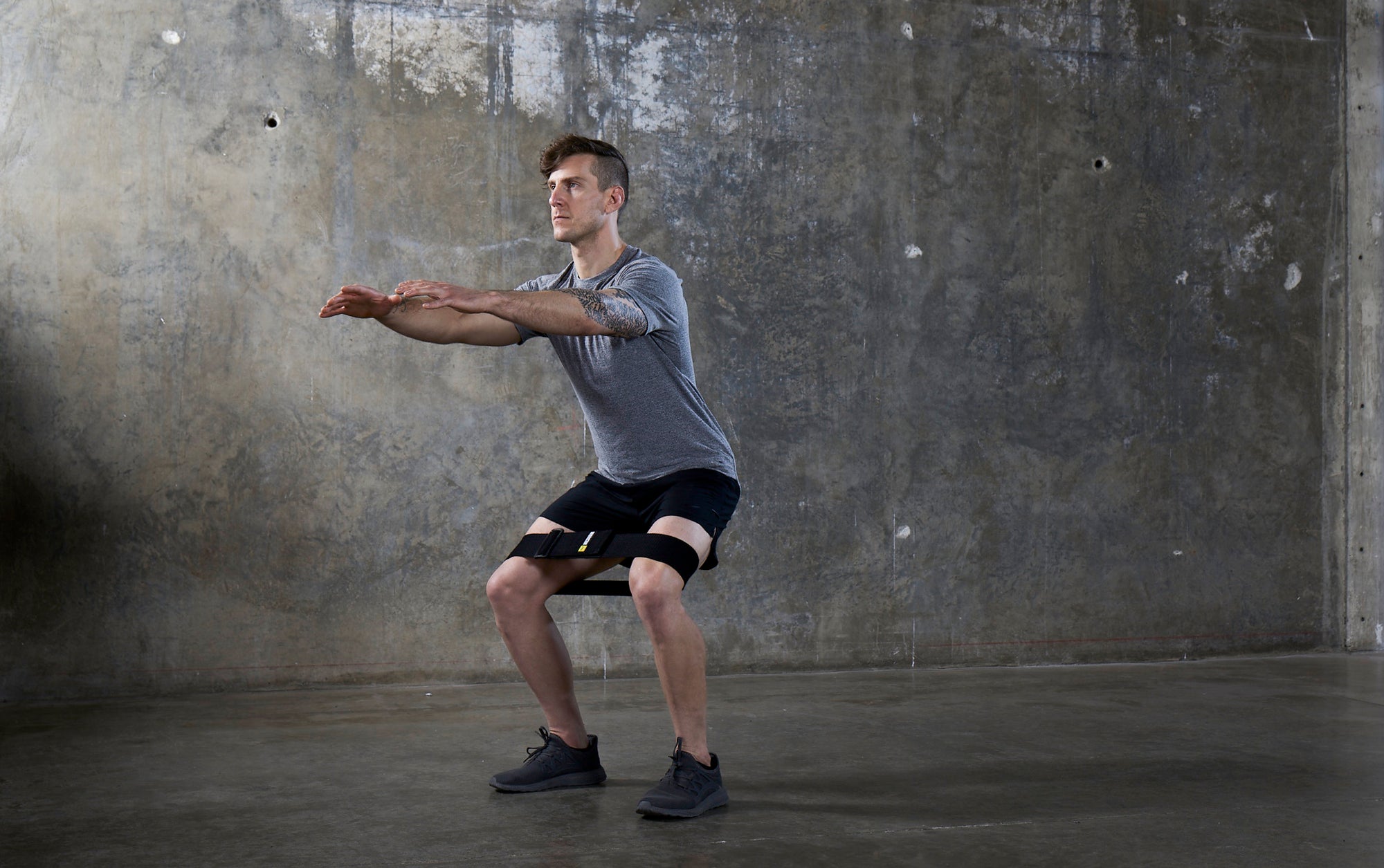
5 TRX® Workouts Every Runner Needs To Improve Strength & Endurance
We’re all born to run, right? We definitely are, except many of us spend our lives in office jobs, sitting in cars during heavy traffic, and other factors that all play a role in how our body responds to both running volume and intensity. Training with your TRX® Suspension Trainer™ and other TRX weights plus resistance tools are a great way to add in running-specific strength, because while our bodies are highly resilient, over time, injuries can happen (like the dreaded IT band and achilles). The good news? Adding in strength training will make you a better, stronger runner by focusing on all the muscles that carry over into your running form and technique.
1) WARMUP ACTIVATION DRILL: BREAK OUT THE TRX® GLUTE BAND
Every run starts with a solid warmup, and a solid warmup can go beyond the usual run-in-place and stretch—it’s intelligently firing up the muscles you’ll use during running. Firstly and foremost, activating your hips and glutes (read: glute medius, glute minimus, glute maximus, adductors, and more) to help stabilize your pelvis for power. Our new TRX® Glute Bands are specifically designed for maximum glute strengthening in a comfortable design made with everyone’s needs in mind.
Build up glute and hip strength to improve posture, pelvic stability, and low back pain.
Soft fabric won’t bunch on leggings or tug hair when next to skin.
3 levels of resistance (light, medium, heavy) to best challenge you as you get stronger.
Adjustable sliders offer even more customization.
Mesh bag to carry with you wherever you go.
Perform the following moves back-to-back one time through to activate your entire lower body.
MOVE 1: MONSTER WALK, 20 STEPS EACH WAY
Wrap the TRX® Glute Band of your choice around your knees, hinge back into a quarter squat, and slowly step out to the left 20 times. Then step forward 20 times, to the right 20 times, then backwards 20 times to complete a square. The key? Keep your hips level and try not to shift your weight too much so your glutes and hips do all the work.
MOVE 2: SQUATS, 10 REPS EACH
With the Glute Band still looped around your knees, perform 10 bodyweight squats, then hold halfway down and perform 10 pulses (one inch up and down, no bouncing), and finish up with holding it at the halfway point again, this time pulsing your knees outward 10 times. The burn is SO real.
MOVE 3: GLUTE KICKBACKS, 10 REPS EACH
Get in a tabletop position, hands and knees on floor, Glute Band looped around your knees. Keeping the core tight and without letting the low back arch, lift one leg toward the ceiling—make sure you keep the knee bent the whole time. It’s a burner of a move and really teaches you proper glute and core activation at the same time.
Want to stop the workout here? Our TRX® Strength Bands are great for shoulder workouts, upper body moves, and all-around full body workouts.
2) STRENGTH SUPERSET: BREAK OUT THE MINI TRX® EXERCISE BANDS
Next up, we want to fire up the front of your hips, which includes your core. Why is this important? Lumbopelvic control and core muscles provide stability for better force generation and motion in the legs (read, less tight hamstrings and longer strides), as well as more controlled and efficient body movements. That’s definitely technical so here’s the gist: imbalances or weakness in the pelvic area and core can result in increased fatigue, decreased endurance, and injury in runners. Let’s add some resistance with our TRX® Exercise Bands, shall we?
Perform each move back-to-back, then rest for 30-60 seconds after the last move. Perform 3 rounds of the moves, then move on to the next Strength Superset, shown below.
MOVE 1: DEAD BUGS, 20 REPS TOTAL
Loop the Exercise Band of your choices (we recommend Lite or Medium) around the balls of your feet. Lie flat on your back and point your arms straight up at the sky. Lift your knees off the ground in a tabletop position (90 degrees). Tighten up your core and without moving anything else, straighten one leg out all the way, then slowly return it back to starting. Repeat on the other leg. Continue back and forth until you complete 20 reps. Feel free to add in this opposing movement to make it more challenging: straighten the opposite arm overhead and flat on the ground with each leg rep.
MOVE 2: HIP FLEXOR MARCHES, 20 REPS TOTAL
When your hip flexors are strong, you can bring your leg up higher for a better stride—plus it’ll take some of the stress away from your adductors so they don’t do too much of the work. With the Exercise Band still looped around the balls of your feet, stand up tall—as tall as you can, feet rooted into the ground—and lift one knee up as high as you can. Pause there for a second, then slowly lower it back down. Your opposite glute should be super fired up. Perform 10 reps on one side, then repeat on the other side. Extra challenge: Hold the last rep at the highest point for 10 seconds before returning to start.
MOVE 3: ADDUCTOR RAISES, 15 REPS TOTAL
Remember what we said about adductors doing too much of the heavy lifting? They should also be strong to keep your hips balanced (especially with all of the glute work). Take a page out of champion middle-distance runner & steeplechaser Emma Coburn’s book and perform this burner of a move: Lie on your side and keep the Exercise Band looped around the balls of your feet. Lift and bend your top knee toward your chest, thendrop your knee to rest on the floor, bottom leg stays straight. Lift your bottom leg up and down, resisting against the tension. Perform 15 reps on each side to feel the burn.
3) STRENGTH SUPERSET: SINGLE LEG MOVES WITH YOUR TRX® SUSPENSION TRAINER™
In the fitness trainer world, this is called “unilateral” strength and it’s important because, guess what? When you’re running, you’re suspended on a single leg the entire time. Perform these moves back-to-back on your straps (shop the HOME2 and PRO4 here), then rest for 60 seconds after the last move. Perform 3 rounds of the moves, then move on to the next Strength Superset, shown below.
WHAT IT DOES
Excellent coordination and control challenge
Improves power and strength that carries over into running form
Using the straps also works your upper back and arms
MOVE 1: TRX LUNGE, 10 REPS
Balance and control is the name of the game (plus full leg strength and pelvic control) with this suspended lunge.
MOVE 2: TRX SINGLE LEG GLUTE BRIDGE, 10 REPS
Feel free to go double leg with our standard TRX® Glute Bridge, but to really up the ante, try for a single leg bridge to really isolate your hamstrings, which are super important for every runner.
MOVE 3: TRX SKATER LUNGE, 10 REPS
Want to feel super strong on one leg? Build up your quad (and knee strength) with this powerful move.
4) STRENGTH SUPERSET: WORK THE CORE
Planks are challenging on their own, but add the suspended effort of your TRX® Suspension Trainer™? Boom—now we’re talking serious strength and control. When it comes to core workouts, there’s no need to overdo it. All you need are a couple back to really dial in on every last ab, oblique, and back muscle.
MOVE 1: TRX ROLLING PLANK, 10 REPS TOTAL
This fiery combo is just that, FIERY. Start in an elbow plank with your feet in the cradles. Hold each of the following for a few seconds before moving on to the next for one full rep: Elbow plank > left side elbow plank > right side elbow plank > back to elbow plank. You’re welcome.
MOVE 2: TRX PUSH UPS, 10 REPS
Stay in the straps and move from your elbow to your hands. Perform 10 pushups and then rest, then repeat the superset two more times.
5) HIIT FINISHER: BUST OUT THE TRX® KETTLEBELL + TRX® MEDICINE BALL
Now for the finisher. Turn a timer on for 8 rounds with 20 seconds on, 10 seconds off. Complete 8 rounds of the first move, then perform 8 rounds of the second move. Boom—your heart rate is up and your lower body fully torched. Make sure you have a TRX® Kettlebell and a TRX® Medicine Ball with some bounce before you begin.
MOVE 1: KETTLEBELL DEAD CLEAN
Place the Kettlebell between your feet then hinge back (like you’re about to deadlift), bending your knees to lower down when you can’t hinge back any further. Grasp the kettlebell by the horns, sit back a little deeper, chest up, lats squeezed like you’re holding a dollar bill there. Push through your feet and explode up, catching the kettlebell at chest height. Not sure how to perform this move? See a breakdown here. Not sure how to hinge? Try practicing with a broomstick first.
MOVE 2: SPLIT SQUAT HOLD + MEDICINE BALL SLAM
Hold a lunge position with both legs bent, back knee hovering off the ground. Slam the medicine ball down hard on your left side, catch it, then slam it down hard on your right side, catching it again. Repeat back and forth.
Congrats! Way to crush the whole workout. Feel free to do it twice a week to add in some serious strength to your running.
OH, AND JUST IN CASE...
If you don’t already have a set of straps, check out our HOME2 (best for those new to fitness) or the PRO4 (best if you need something more advanced), and shop them now. And, of course, behind every Suspension Trainer workout is the anchor that hangs it up—find the one for your training space here.
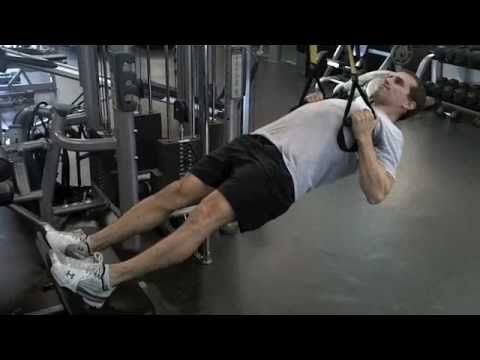
5 TRX Moves with a Bench
Put these 5 TRX exercises together the next time you bring you TRX Suspension Trainer to the gym to add an extra challenge to your workout by incorporating a bench, a box, or any other sturdy knee-high surface.
We know you have a weight bench lying around, so put it to good use with these five exercises, created by strength coach and personal trainer Doug Balzarini. “By adding the bench to a number of traditional TRX exercises, your strength, balance, coordination and core stability demands are greatly increased,” says Doug. As always, we advise using caution when executing these exercises, and ensure you are proficient in them before having your clients or athletes perform them.
1. TRX Elevated RowBy elevating your lower body for a TRX Row, you are now closer to parallel with the ground, making the exercise extremely challenging. Maintain a neutral grip (palms facing each other), elbows by your sides with a neutral spine throughout the movement.
2. TRX Elevated RolloutThis is a favorite exercise of Doug’s due to the full body control that is required. All the spinal stabilizers must be firing in order to maintain proper technique, and your posterior shoulder/scapula stabilizers must be engaged the entire time. Use a slow, controlled manner as you extend your arms and body out to your end range.
3. TRX Elevated Single Leg Squat (aka Pistol Squat)In addition to the increased balance component, the addition of the bench allows the “free” leg to extend out a little lower than if you were to perform this exercise on the floor. This is a good alternative if you don’t have the ankle mobility in the working leg or hip flexor strength in the free leg to perform a pistol squat on the floor. Be sure to keep your arms relatively straight and try to keep your weight on the heel to the mid foot while maintaining an upright posture.
4. TRX Elevated Hip PressDoug loves using this exercise with his MMA athletes due to the demands of the sport. They require a great deal of strength and endurance in the hips and glutes, and this exercise targets this area nicely. If you plan to add weight, it’s best to have a trainer or partner nearby to assist you. Adding the bench to this exercise allows you to get a greater range of motion through the hip joint.
5. TRX Elevated Hip HikeSimilar to exercise #4, being elevated on the bench allows you to drop the hips lower than when performing the movement on the floor. Make sure your shoulder and elbow are in a safe alignment and use a controlled tempo throughout.
Try these moves on for size during your next workout, and you’ll find the added elevation will result in new heights of mobility, stability and strength.
Doug Balzarini works at Fitness Quest 10 (www.fq10.com) as a personal trainer, strength coach and Operations Director for Todd Durkin. A Massachusetts native, he earned his Bachelor’s degree in Exercise Science with a minor in Business Management from Westfield State College. Since moving to San Diego, he has completed some graduate work in Biomechanics at SDSU, obtained an ACE Personal Trainer certification, the NSCA-CSCS certification, a Spinning certification, TRX instructor training, EFI Gravity instructor training and FMS training. He has also appeared in eight fitness videos, written numerous fitness articles, completed a MMA Conditioning Coach certification program and has competed in multiple grappling tournaments.
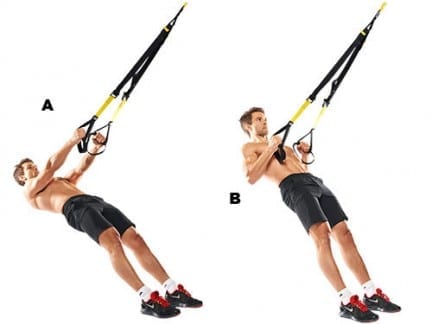
TRX
5 TRX Exercises for a Stronger Back
TRX Training
Classic, few think about strengthening their back, until it starts to hurt or worse. Spend 10 minutes a day, a few times a week to take care of that back and it will take care of you, or keep you from needing to see the doctor. The TRX Straps are a simple and easy tool to get strengthen your back. TRX Master Trainer Kari Woodall shows us how with these TRX exercises.
Watch more with our TRX workout YouTube guide
TRX Resisted Rotation
For a stronger back, train your body in 3D and work the whole cylinder! The Resisted Rotation fires up your Lats and increases core activation that prepares your body to perform better in all exercises.
- SSW, Straps Mid-Length, Single Handle Mode
- Offset Stance, Inside leg forward hip width, Line up sternum on anchor, Engage core, Step towards anchor to load body more, Maintain active plank without tilt or rotation.
TRX Overhead Squat-Wall Slide
The OH Squat may be part of your current leg workout, but we’re turning on the afterburners by adding a Wall Slide, making it more dynamic and challenging. By maintaining constant pressure on the straps and rowing as you come out of the squat, you’re lighting up your backside from hands to heels.
- SF, Straps Mid-Length
- Arms in Y or I, Squat Stance, Maintain good posture and tension back on straps through hands while lowering hips down, Initiate Wall Slide with Scap while simultaneously driving up from the bottom of the Squat with hips.
T-Y Fly Combo
The T-Y Fly Combo should be a staple in your pulling repertoire.
- SF, Straps Mid-Length or Mid-Calf
- Arms in T, Offset Foot Stance to maintain constant tension through ROM, Maintain Plank while decelerating back bringing arms together, Initiate pull with shoulders and back, Pull with straight arms back to T, Alternate between T and Y.
Take Our Training Quiz
TRX Power Pull
Buckle up because you’re getting a TRX Training Trifecta with the Power Pull: a fantastic Unilateral Pulling exercise challenging your core and metabolic burn with Rotation and Speed!
- SF, Straps Mid-Length, Single Handle Mode
- Begin in Single Arm Row, Straighten elbow and open shoulders and hips simultaneously. Set Scapula down and then squeeze shoulder blades together to pull out of rotation and finish with Single Arm Row to return, Rotate in a plank and connected torso so hips and shoulders move and work together for effective power transfer.
TRX Pull-up
Feel the burn with a little DOMS (delayed onset muscle soreness)! The Pull-up is the final exercise, and for good reason: this exercise will revisit you for days after your training if you control the eccentric part of the Pull-up.
- Straps Over-shortened
- Sit under anchor, Set shoulder blades down and then squeeze shoulder blades together to pull up, Resist gravity and decelerate on the way back down by trying to slowly push arms overhead while maintaining active plank and open neck space.
P.S. Get other TRX back exercises straight from the TRX App.
Do your next workout with our TRX equipment:
TRX® PRO4 SYSTEM
BUY NOW
TRX® HOME2 SYSTEM
BUY NOW
TRX® TACTICAL GYM
BUY NOW
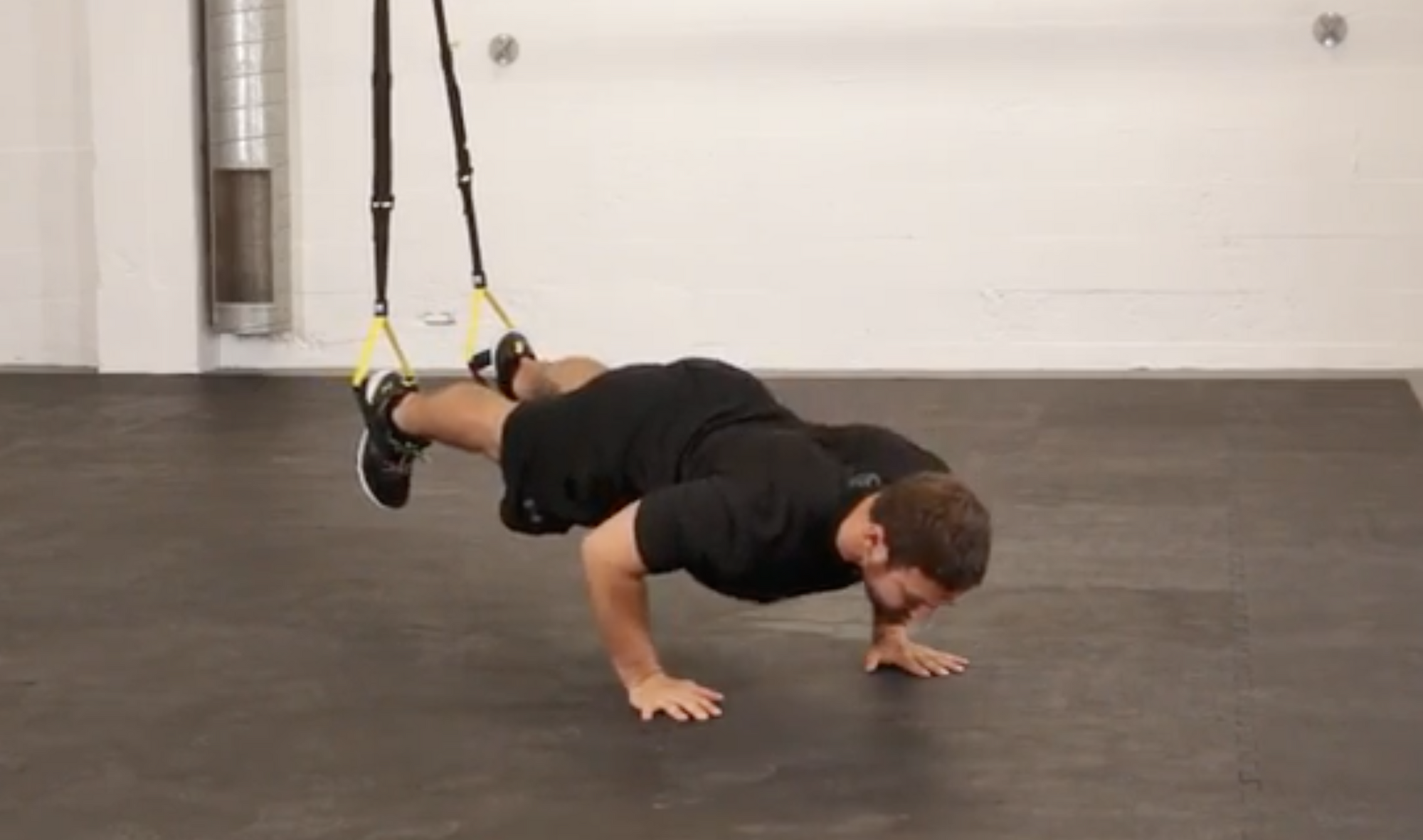
General
5 MOVES FOR A TOTAL BODY WORKOUT
If you're looking to mix up your training and coaching routine with TRX, check out these 5 full-body moves that will give you maximum bang for your buck. Want to find the perfect TRX exercises for your fitness level? Take our quick assessment quiz to get a customized workout plan built around these effective moves.
TAKE OUR TRAINING QUIZ
1. TRX Overhead Squat
Purpose - Placing your hands overhead while you are squatting engages your core muscles as well as the muscles of your posterior chain (posture muscles) - the added result is an increase in heart rate.
Tip - Keep your arms straight and biceps in line with the ears. Keep the straps pulled tight from start to finish, this will engage your muscles, adding an awesome upper body challenge. For an extra burn, hold the bottom of the squat for one second.
2. TRX Decelerated Push-Up
Purpose - The slower deceleration movement combined with the explosive push keeps the muscles guessing.
Tip - Keep your plank solid! As you begin to fatigue the plank is often the first thing to go, ensure you are engaging the core by pulling your ribs down toward your hips. Flex your feet in the foot cradles pointing your toes towards your nose and push your heels into the handles for increased leg muscle recruitment. The stronger your plank, the easier your push-up.
3. TRX Tricep Roll-Out to Extension
Purpose - By kneeling, you are reducing the strain without having to sacrifice the angle. This allows more isolation for the tricep and more control for the shoulders.
Tip - Keep the shoulders down and away from your ears especially at full rollout, and keep the elbows in tight to the body and pointed at the ground.
4. TRX Crunch to TRX Pike Combo
Purpose - By keeping a loaded crunch before you pike, you activate the quads in a whole new way!
Tip - While setting up your plank, make sure to keep your shoulder blades set down and back. Think about corkscrewing your palms into the ground, turning the elbows in to point at your knees. Finally make sure once you crunch the knees under the hips, you push down into the top of the foot and go straight up and down for the pike.
5. TRX Inverted Row
Purpose - To allow a deeper angle on the row and a bonus glute workout.
Tip - Keep the shoulders set in between sets. Even though the hips will touch down on the ground between reps, don’t lose the lift in your chest and shoulder blades pinched together. This will add isolation throughout the movement. Also, push the hips as high as you can to create a table top with the body, this will be sure to max out the glutes!
For the other full body workouts, you're going to need weights, strength bands, and our signature suspension trainer.
TRX® PRO4 SYSTEM
BUY NOW
TRX® HOME2 SYSTEM
BUY NOW
TRX® TACTICAL GYM
BUY NOW
Try combining these exercises together for a full-body workout. Better yet, combine these exercises with other TRX movements. For inspiration, check out the TRX Training Club:
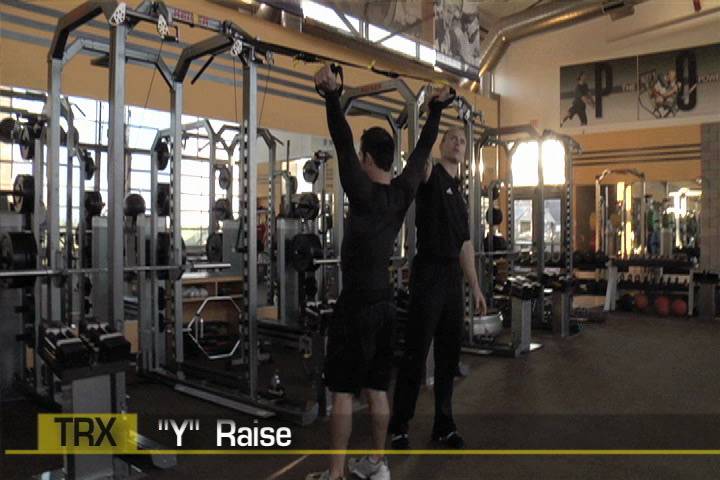
5 Essential TRX Moves For Baseball Players
Like athletes in other sports, the boys and girls of summer are using the TRX to get in their best shape ever for America’s favorite pastime: baseball. But don’t bench yourself if you’re not a baseball or softball aficionado. The same movements that make you strong in baseball work for all spring sports such as golf, tennis, track and field or just day-to-day activities.
Late last year, I went to Tempe, Arizona to reacquaint the coaches and trainers of Athletes’ Performance, a premier training facility for sports performance. With the TRX. Mark Verstegen has built a fantastic reputation in the sports performance industry using a “systems” based approach to athletic development based on science, best practices and professional ethics. After a few hours on the TRX, Mark and his team were excited about the possibilities of using the TRX with their athletes. The philosophy and execution of the following exercises filmed at Athletes’ Performance are aligned with TRX's approach to multijoint, multiplanar movements which incorporate an effective and functional core strengthening component.
The TRX is used to develop strength and mobility needed for improved performance and to reduce the risk of injury for baseball players (or any sport that requires rotational force such as tennis or golf). Because you train in a standing position, traditional shoulder exercises become integrated movements from top to bottom of the kinetic chain. The first three exercises in the TRX Spring Training workout address the rotational and posterior (back) muscles of the shoulders, shoulder girdle and core. These muscles act as decelerators, or breaks, for the throwing and swinging associated with the game. Often, it is the imbalance of the stronger chest and anterior shoulders to the back muscles that can lead to reduced performance and injury. What makes the TRX Y, T and W Deltoid Flys more effective than isolative external rotation exercise is the integration of core or “pillar” strength and stability.
The TRX Acceleration Load and Lift exercise resembles the TRX Sprinter Start but takes the rotary stability component up a notch or two. Trying to steal second or making a dash to catch a deep fly ball requires you to have good acceleration mechanics to cover ground quickly. This exercise also trains core strength in a single leg stance. Do not be surprised to see one side stronger than the other. Identifying and training to reduce this bilateral asymmetry will improve performance and reduce injury risk.
The TRX Single Arm Row is another exercise similar to an exercise you TRX veterans have seen, the TRX Power Pull. Notice the TRX Single Arm Row demonstrated here separates the rotation from the row. This places a different demand on core, back and arm strength. Subtle differences in similar exercises create different training effects.
As with all TRX exercises and programs, intensity can be adjusted for all fitness levels by modifying body position and foot placement. The TRX is an incredible tool for the beginner up to the elite athlete. It is “easy to use but hard to master” and appropriate for everyone.
Use these exercises to supplement your training program for baseball, tennis, golf, track and field, for pre-hab, rehab, pillar strength and movement preparation. Want to find the perfect sport-specific TRX exercises for your needs? Take our quick assessment quiz to get a customized training plan. You will feel the difference TRX Suspension Training makes in the gym and in the game.
TAKE OUR TRAINING QUIZ
TRX T Deltoid Fly
Sets: 1 to 3
Reps: 6 to 12
TRX W Deltoid Fly
Sets: 1 to 3
Reps: 6 to 12
TRX Y Deltoid Fly
Sets: 1 to 3
Reps: 6 to 12
TRX Acceleration Load and Lift
Sets: 1 to 3 each leg
Reps: 6 to 12
TRX Single Arm Row
Sets: 1 to 3 each arm
Reps: 6 to 12
As the TRX Head of Human Performance, Chris Frankel draws from over 25 years of experience as a strength and conditioning coach. He earned an MS in Exercise Physiology from the University of New Mexico, where he is currently completing his doctorate in Exercise Science. Before TRX, Chris was an instructor in the Department of Health, Exercise and Sport Sciences at the University of New Mexico.
Mark Verstegen is the President and Founder of Athletes’ Performance and Core Performance. He serves as the Director of Performance for the NFL Players Association, and is an athletic coach for the German national football team. He also set a Guinness World Record with Sheraton Hotels for the World's Largest Resistance Band Strength Training Class.

3 Reasons Why Every Golfer Should Use the TRX Suspension Trainer
Golfers at every skill level need clubs, gloves, shoes, and a bag, but the best players in the world know that the TRX Suspension Trainer is one of the most effective tools golfers can use to take their game to the next level.
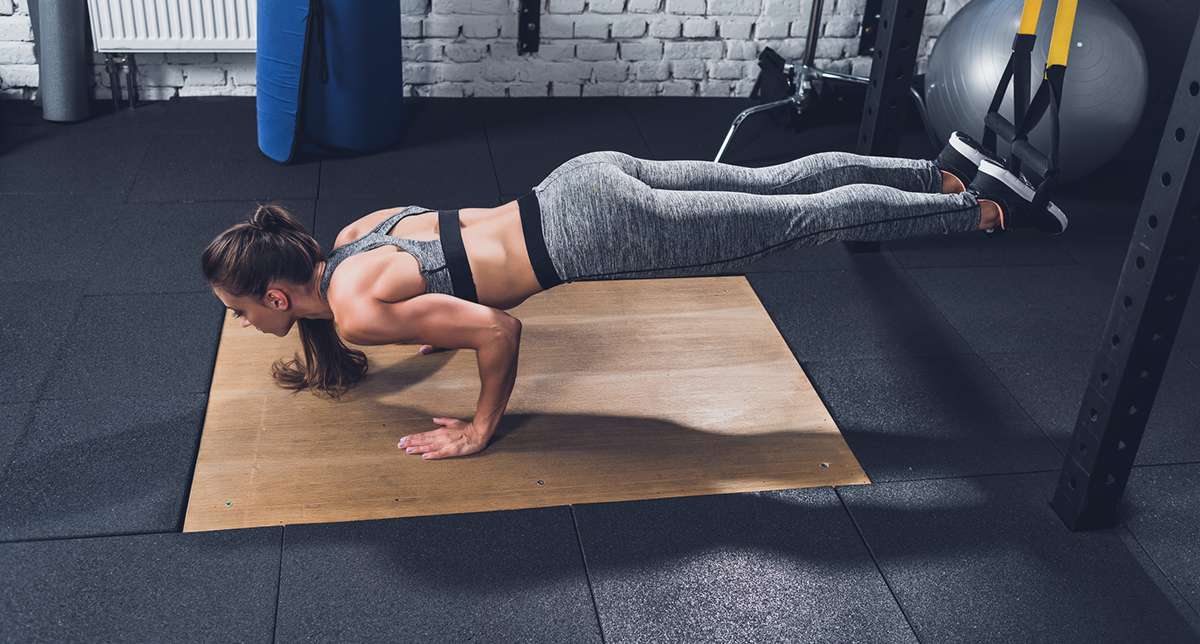
4 TRX Moves That Will Make You a Better Skier
Haven’t made it onto the slopes yet this season?? Well, it's not too late, with the record snowfalls that keeps coming you still have time. You may feel rusty on that first day back on the mountain, and your body may not be physically prepared for the demands.

5 Essential Tools for Every Home Gym
So you want to invest in a home gym. You've even found the right apps for in-home coaching. Now you have to decide what kind of equipment to buy.
4 TRX Exercises For High Performing Hips
The word on the street is that if a player makes it to the NBA, they must be moving and performing at a high level from head to toe. It sounds good, but more often than not, it’s far from the truth.
